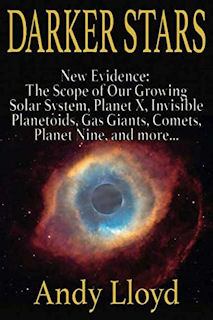Andy Lloyd's Dark Star Blog

Blog 13 (April 2014)
New Object in Outer Solar System Hints at Planet X
Astronomers Chadwick Trujillo and Scott Sheppard have discovered a new distant object beyond the Kuiper Belt, similar to Sedna.
2012VP113 is 450km wide and is orbiting the Sun at 80 Astronomical Units (1), making it the second most distant object in the solar system discovered so far (after Eris (2)).
"Here we report the presence of a second Sedna-like object, 2012VP113, whose perihelion is 80 AU. The detection of 2012VP113 confirms that Sedna is not an isolated object; instead, both bodies may be members of the inner Oort cloud, whose objects could outnumber all other dynamically stable populations in the Solar System." (1)
What's really exciting about this discovery is its orbit. Sedna, 2012VP113 and almost a dozen other Kuiper Belt Objects are aligned in an odd way compared with other objects in the solar system. The implication of this is that there may be another large planet well beyond Pluto affecting their orbits.
"One explanation for the alignment could be the tug of a rocky planet that is 10 times the mass of Earth that orbits the sun at 250 AU, the team calculate. That world would be cold and faint – and would push and pull at the closer objects like a distant but powerful puppeteer. NASA's Wide-field Infrared Survey Explorer (WISE) scoured this region of space in 2010 and 2011 searching for a so-called Planet X and came up empty.
"However, WISE was looking for the tell-tale warmth of gas giants – a rocky "super-Earth", like the one Sheppard's team suggest, would be too cold for the telescope to pick up. "This is too faint for WISE," says Ned Wright, the space telescope's principal investigator. Even if the planet has a small internal heat source – and absorbs some sunlight, it would still not generate enough heat to register, he adds." (3)
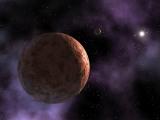
It's a strange thing, because one of the arguments made against an undiscovered Planet X is that the telescopes available now are so powerful that it is surely not possible that they could have missed a planet ten times more massive than Earth? Yet, as is indicated above, it is indeed possible at the kind of distances we are discussing here.
There are likely to be a lot more of these inner Oort Cloud objects discovered in the future. It's been 10 years since Sedna was discovered, and at the time Sedna also hinted at a more distant object (4). But Sedna was only one object. With two objects, we now have increasingly compelling evidence that an unknown major body affected the outer solar system in the past. Of course, there are other possible explanations for these unusual orbital alignments in these very distant outer solar system bodies. It may have been a passing star. It may have been an ejected planet, or early binary companion. Or, it may have been Planet X, which may still be out there affecting these orbits 4.5 billion years later.
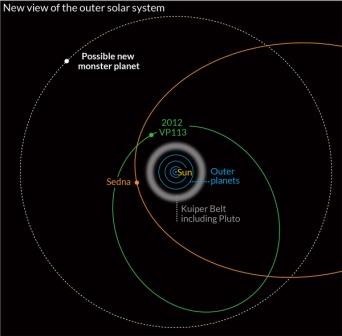
What's potentially more remarkable about this scientific Planet X speculation is that the orbit of the proposed Ten-Earth-Mass 'monster planet' would be out at about 250AU, which puts it in the territory for Zecharia Sitchin's Nibiru. Now, Zecharia Sitchin's proposal for this Planet X body was for a rocky world similar to Earth, but much more massive (5). Should a Ten-Earth-Mass planet be pinpointed by astronomers - by triangulating the various orbital anomalies of the new inner Oort Cloud objects like Sedna and 2012VP113 - then it would fit the bill for Nibiru. It was my later revision of Sitchin's theories that introduced the idea of a brown dwarf system, an idea which has since taken hold among Planet X hunters (6). But the late Zecharia Sitchin always maintained that Nibiru was probably a self-heated rocky world. He would have been unphased by the following statement, for instance:
"Planet X hopers: Note that NASA just released results from its Wide-Field Infrared Survey Explorer that found nothing Saturn’s size (or bigger) as far as 10,000 AU, and nothing bigger than Jupiter at 26,000 AU." (7)
Despite this disappointment regarding hopes for a sub-brown dwarf companion, leading outer solar system astronomers seem to be admitting that a massive rocky planet 250AU from the Sun could have been missed by WISE.
If Sitchin was right all along I would be so delighted. It would have to be a pretty cold rock, though - however massive - making the life issue a bit of a problem for those hoping to find the Anunnaki on an habitable world with an atmosphere at this distance. Nevertheless, Planet X is Planet X, and it's possible that a brown dwarf lies way out there at the edge of the solar system as well. This announcement could be a game-changer.
Written by Andy Lloyd, 27th March 2014
References:
1) Chadwick Trujillo and Scott Sheppard "A Sedna-like body with a perihelion of 80 astronomical units", Nature, 507: 471–474, 27 March 2014
2) Phil Plait "Cool Discovery: Another Incredibly Distant Member of the Solar System" 26 March 2014
3) Nicola Jenner "New dwarf planet hints at giant world far beyond Pluto" 26 March 2014 with thanks to Barry
4) Andy Lloyd "Sedna: A Clue to Nibiru" 15th March 2005
5) Zecharia Sitchin "The 12th Planet" Avon 1976
6) Andy Lloyd "Dark Star: The Planet X Evidence" Timeless Voyager Press, 2005
7) Elizabeth Howell "Discovery! Possible Dwarf Planet Found Far Beyond Pluto’s Orbit" 26 March 2014, with thanks to Lee
Hopes Remain For a Companion Object
As an update to the above article, I'd like to reproduce a chunk of an article that appeared on the Discovery.com website, which includes comment by brown dwarf expert Kevin Luhman, who has clearly not given up on the possibility of a tiny sub-dwarf star companion:
"A new analysis of data collected by NASA's Wide-Field Infrared Survey Explorer (WISE) spacecraft revealed no sign of the mysterious Planet X hypothesized to exist in the outer solar system. But scientists are keeping up the search for a planet or dim star far from the sun. "I think astronomers will continue to search for a distant companion to the sun with every new, deeper survey," Kevin Luhman of the University of Pennsylvania told Space.com by email. Luhman, who studies low-mass stars and "failed stars" known as brown dwarfs, recently published the results of his search for Planet X using WISE.
"We have a natural desire to better determine the contents of our solar system," Luhman said. "There's a vast volume of space in the outer solar system, and we would like to know what's out there."
"And a recent find may give a boost to the hunt for Planet X. On Wednesday (March 26), researchers announced they had discovered a dwarf planet orbiting the sun in a distant, largely unexplored region known as the inner Oort Cloud. Further, the orbits of the newfound object, known as 2012 VP113, and some of its neighbors are consistent with (though by no means proof of) the existence of a planet-size "perturber" far from the sun — perhaps so distant that it cannot be detected with current instruments.
"For more than a century, astronomers have considered the possibility that another massive body exists in the outer solar system. Percival Lowell coined the term "Planet X" at the turn of the 20th century to refer to an undiscovered large planet that could be responsible for perturbing the orbits of Uranus and Neptune. More recently, the idea grew to incorporate a possible dwarf-star companion to the sun, nicknamed "Nemesis."" (1)
Although astronomers are always keen to publicly distance any talk of Nibiru from their academic studies about potential additional planets in the solar system, it is pretty clear that the more mainstream news outlets see no need to make such a distinction. It it looks like a duck, walks like a duck and quacks like a duck, then it's a duck.
I should also add that a contact I have in the academic astronomical community recently spoke with Professor John Matese, who also remains hopeful of finding a companion object (2) - although his estimate for its distance has shifted further away from the Sun, closer to that of Dr John Murray's proposal. Both men published academic papers in 1999 arguing that such an object (which John Matese names 'Tyche') is responsible for non-random distributions of long distance comets.
Written by Andy Lloyd, 19th April 2014
References:
1) Nola Taylor Redd "Could 'Planet X' Still be Lurking Out There?" 28 March 2014, thanks to Bruce (on longer available online)
2) Correspondence received 1 April 2014
Habitable Earth-like Planet Discovered Orbiting Red Dwarf
It's been recognised for a while now that dwarf stars may be fertile hunting grounds for habitable planets. Whilst my interest has been predominantly in the sub-brown dwarf varieties, it is good to see that the larger red dwarfs are living up to expectations. Astronomers have discovered an Earth-like planet orbiting the red dwarf Kepler-186, within its so-called 'Goldilocks Zone'.
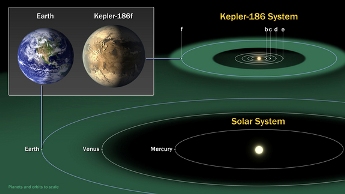
Image Credit: NASA Ames/SETI Institute/JPL-CalTech
Because the red dwarf star is much smaller and cooler than the Sun, its habitable zone is located much closer than in the solar system:
"The newfound planet, called Kepler-186f, was first spotted by NASA's Kepler space telescope and circles a dim red dwarf star about 490 light-years from Earth. While the host star is dimmer than Earth's sun and the planet is slightly bigger than Earth, the positioning of the alien world coupled with its size suggests that Kepler-186f could have water on its surface, scientists say." (1)
A host of exoplanets have been discovered in recent years, and this would appear to be the best candidate yet for life outside the solar system. Similar discoveries of planets orbiting around brown dwarfs, or even smaller dwarf 'stars', are likely to come in the future when space-based telescopes have gained sufficient power to analyse the very fine data from these minute systems. I am confident that it will become apparent that habitable, Earth-like worlds are also common in these tiny dwarf systems, both in their own right and as binaries to much larger parent stars.
Written by Andy Lloyd, 19th April 2014
Reference:
1) Miriam Kramer "Found! First Earth-Size Planet That Could Support Life" 17 April 2014, with thanks to Dave
Enceladus's Ocean and the Dark Star Theory
It's one of the wonders of the solar system, but due to its diminutive size, and location among its lunar brethren orbiting giant Saturn, few people have heard of it. Nevertheless, Enceladus continues to amaze astronomers. Even though it lies so far away from the Sun, it has been found to have a subsurface ocean, very similar to those discovered on the Galilean moons of Jupiter (which lie much, much closer to the Sun).
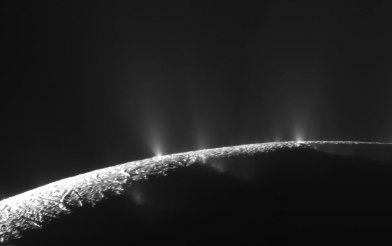
Scientists have now confirmed the presence of the ocean, and have been able to provide some tentative data for its size:
"Researchers theorized the presence of an interior reservoir of liquid water in 2005 when Cassini discovered water vapor and ice spewing from vents near the moon's south pole. New data on the moon's gravity field reported in the April 4, 2014, edition of the journal Science strengthen the case for an ocean hidden inside Enceladus.
"The gravity measurements suggest a large, possibly regional, ocean about 6 miles (10 kilometers) deep, beneath an ice shell about 19 to 25 miles (30 to 40 kilometers) thick. The subsurface ocean evidence supports the inclusion of Enceladus among the most likely places in our solar system to host microbial life. Before Cassini reached Saturn in July 2004, no version of that short list included this icy moon, barely 300 miles (500 kilometers) in diameter.
"There is no certainty the subsurface ocean supplies the water plume spraying out of surface fractures near the south pole of Enceladus, however, scientists reason it is a real possibility. The fractures may lead down to a part of the moon that is tidally heated by the moon's repeated flexing, as it follows an eccentric orbit around Saturn." (1)
It is clear from this that before 2005 theory did not predict that tidal heating would produce sub-surface oceans in tiny moons like Enceladus, located so far away from the Sun's warmth. Is it possible that similar scenarios might play out on some of the moons of Uranus, and even distant Neptune? After all, scientists only became aware of this possibility because of the plumes of water streaming into space, as spotted by the Cassini probe as it viewed Enceladus. Without those spectacular geysers, I suspect scientists would still be in the dark about the tiny moon's sub-surface ocean.
So what of it? Clearly, oceans on these moons are more common than expected. We know they exist around the gas giants. But the solar system has only two types of planet so far discovered: gas giants, and rocky worlds of Earth-size or smaller. Now astronomers are speculating about a 10-Earth-mass planet beyond the Kuiper belt, but we have no precedent for determining whether a moon around such a world might also harbour a sub-surface ocean. After all, this newly proposed Planet X lies in the middle of the spectrum of solar system planets; a spectrum of which we currently understand only the extremes.
My point being: perhaps we don't actually need a sub-brown dwarf to create a habitable, sub-surface environment on one of its moons? Perhaps a binary planet system composed of a 10-Earth-mass planet with a 1-Earth-mass planet in a close but eccentric orbit around it would also suffice? The problem here is that a habitable atmosphere would still be out of the question, and that dwelling on such a world would be strictly subterranean in nature.
Written by Andy Lloyd, 19 April 2014
Reference:
1) NASA Science "Deep Ocean Detected Inside Saturn's Moon" 4 April 2014, with thanks to Mart
'Weather Event' Re-dates Egyptian Chronology
A new translation of the ancient Egyptian 'Tempest Stela' places the Pharoah Ahmose as Egypt's ruler during the massive volcanic eruption at Thera (now the island of Santorini, Greece) around 1621-1605 BCE (1).
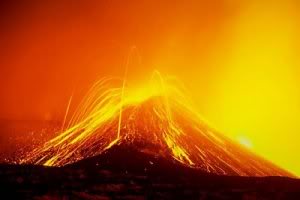
That shifts the date of Ahmose's reign back about fifty years from the current chronology accepted by Egyptologists:
"Linguists Dr Robert Ritner and Dr Nadine Moeller from the University of Chicago’s Oriental Institute believe the unusual weather patterns described on the Tempest Stela were the result of a massive volcano explosion at Thera – the present-day island of Santorini in the Mediterranean Sea. Because volcano eruptions can have a widespread impact on weather, the Thera explosion likely would have caused significant disruptions in Egypt.
"The new translation suggests the Egyptian pharaoh Ahmose ruled at a time closer to the Thera eruption than previously thought – a finding that could change scholars’ understanding of a critical juncture in human history as Bronze Age empires realigned.
"[It] shows that the text was more likely a description of weather events consistent with the disruption caused by the massive Thera explosion. Dr Ritner said: “the text reports that Ahmose witnessed the disaster – the description of events in the stela text is frightening.”
"The stela’s text describes the ‘sky being in storm’ with ‘a tempest of rain’ for a period of days; the passages also describe bodies floating down the Nile like ‘skiffs of papyrus;’ importantly, the text refers to events affecting both the delta region and the area of Egypt further south along the Nile." (2)
The 'weather report' on the Stele reports a 'tempest of rain' and dead bodies floating down the Nile like 'skiffs of papyrus'. Egyptology is notoriously conservative, and it may be some time before it accepts this new translation as evidence that the dating of the reign of Ahmose (and, by extension, all the rest) needs re-configuring.
Rogue historians, like David Rohl (3) and Immanuel Velikovsky (4), have famously argued for a rethinking of accepted chronologies, with little success impact among mainstream Egyptologists. But perhaps this is different: the radiocarbon dating of the Thera volcano is solid enough, and it's hard to explain the ancient Egyptian description of this deadly cataclysm any other way.
Many have argued that this volcanic explosion precipitated the events of the Exodus. If so, then it would appear that the Biblical Pharoah was Ahmose. More controversially still, it may also have been tied in with the approach of a rogue planetary body appearing in the sky close to the Sun, in the form of the fiery red Comet Typhon, or the Destroyer.
Written by Andy Lloyd, 19th April 2014
References:
1) Robert K. Ritner and Nadine Moeller "The Ahmose ‘Tempest Stela’, Thera and Comparative Chronology", Journal of Near Eastern Studies, 73: 1, 2014
2) Sci-News "Tempest Stela of Ahmose: World’s Oldest Weather Report" 3 April 2014
3) David Rohl "Legend: The Genesis of Civilisation" ArrowBooks 1999
![]() Legend: The Genesis of Civilisation
Legend: The Genesis of Civilisation
4) Immanuel Velikovsky "Ages in Chaos" Sidgwick and Jackson Ltd 1953
![]() Ages in Chaos I: From the Exodus to King Akhnaton
Ages in Chaos I: From the Exodus to King Akhnaton
The Shabaka Stone and Nibiru
A fascinating Egyptian stone relic may offer clues about Nibiru, according to German researcher Frank Rothe. He wrote to me with these thoughts, and I've added in some links for interested readers to explore the subject further. Note that I suspect that the Egyptian god Horus was actually the Dark Star, rather than Earth. But Frank's own interpretation is as valid as my own and, either way, I hope this offers a new vantage point to see how Nibiru might have become incorporated into Egyptian stellar cosmology:
Hi Andy,
I am Frank Rothe, a German hobby researcher, and I am investigating the Egyptian Pyramids and derived from these researches I have created a new model of the atomic nucleus (1).
I agree with you, that the early earth was located at a greater distance from the sun as today. I have pointed out this in my 2002 book "Der Pyramiden Code". It is written in German and I don't know, if it is translated into English. There is an ancient text on the Shabaka stone (2), which leads in this direction. In this text, Geb is the supreme God instead of Ra and he rules over the battle Horus against Seth [For English translations of the hieroglyphic texts on the Stone, with analysis, see (3)]. When you see Geb as Nibiru, Horus as Earth and Seth as Mars, the text describes the changes of the orbits of Mars and Earth. In this battle Horus loses one eye (Earth's moon) and Seth both testicles (Mars' moons Phobos and Deimos).
The text implies that this change happened as a well-planned artificial action of the gods. That means they could deal with gravity and play with planets! This is a hint, that Sitchin was right with his story of the Anunnaki. Only the time frame doesn't fit. The change of the orbits seems to have occurred billions of years ago, but the Anunnaki seem to have appeared on earth only 432,000 years ago.
With best regards from Germany
Frank Rothe
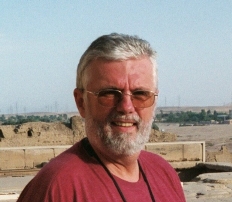
German Researcher Frank Rothe
~ * ~
Hi Frank,
Thank you very much for your fascinating email, outlining the overlap between our research findings. I think that the potential difficulty about the time-scales that you write about need not be as big a problem as it appears - Sitchin's cosmology seems to have focussed upon events about 3.9 billion years ago, rather than during the period that the Anunnaki were actually here on Earth. So the battle you describe, with Geb as Nibiru, might have discussed a very early event, and that the cosmological story of that event was given to us by the Anunnaki rather like a scientific history lesson.
The Shabaka Stone, in the British Museum
Or, one might argue a more Velikovsky-like argument, where these major cosmic events occurred much more recently than science currently allows for. That's harder to envisage, but who is to say? That's a big debate right there, just as Velikovsky encountered within his own academic community.
Andy Lloyd
* Correspondence reproduced with permission, 16 April 2014
References:
1) Frank Rothe: "Neues Modell des Atomkerns"
2) British Museum "The Shabako Stone"
3) Wim van den Dungen "On the Shabaka Stone"
More about Dr Hermann Burgard
Following my blog piece last month about the translations of Sumerian texts by Dr Hermann Burgard, I wondered whether Frank Rothe might also have come across this work during the course of his own research. Luckily, he had, and offered these thoughts about the content of the "Temple Hymns of Enheduanna", written about 2300BCE, and the very Sitchinite scenario that comes out of Dr Burgard's new translations:
Hi Andy,
One of the books of Dr. Burgard is entitled "Encheduanna - Geheime Offenbarungen" (secret revelations). It is written in German and I possess it, the second edition from 2012. Encheduanna seems to be the daughter of Sargon I, and was a female high priest. The text has 42 parts and Dr. Burgard translated it with a new method. He put all possible meanings of the Sumerian words together and tried to find the correct meaning by putting the words in their correct context.
His translation brings us to a very Sitchinite version of our history of the past. Temples are for him complexes of buildings for resting, for nutrition, serving as a newsroom, production building or flight control center. They had sender and receiver and the metal heads of the temple towers were antennas for somewhat like radio transmission. The Gods Dr Burgard calls decision makers. They had rockets and used acetylene, which can be produced from lime stone, as fuel. For the production of this fuel the decision makers held human people as slaves. The work was very hard and very dangerous. Dr. Burgard's book has more than 280 pages, all in German.
with best regards,
Frank Rothe
Many thanks to Frank for this very useful information. I will continue to update about Dr Burgard and his work as I discover more.
The Threat from Space

Asteroid impacts are more common than thought, according to ex-astronauts concerned about the possibilities of asteroid impacts in the future. This news, which appeared on the front page of the Huffington Post (1), is derived from a group who are currently developing a private sector solution to locating dangerous Near Earth Asteroids, it has to be said, but is no less alarming for that:
"On Tuesday, the B612 Foundation (2), which is devoted to preventing the next deep impact, will present data from a nuclear-weapons test warning satellite showing that far more asteroids have hit earth in the past few years than previously thought, the organization announced on its website. The data, collected from a nuclear missile detection system that picks up large blasts on earth, shows that since 2001, asteroids have caused 26 explosions on the scale of an atomic bomb.

